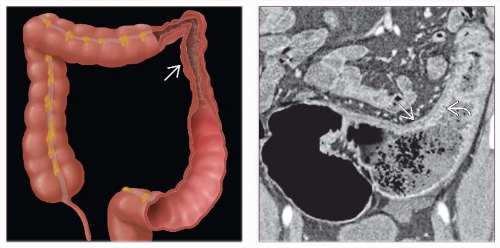

The above information is an educational aid only. You always have the right to refuse treatment. Discuss treatment options with your healthcare providers to decide what care you want to receive. Learn about your health condition and how it may be treated. You have the right to help plan your care. You have questions or concerns about your condition or care.You have diarrhea but feel like your bowels are still full.You have abdominal cramps that come and go.When should I contact my healthcare provider? You cannot have a bowel movement or pass gas.You have nausea and vomiting, and severe, worsening abdominal pain.This will help prevent hernias that can cause part of your intestine to go through your abdominal wall. Ask your healthcare provider for information if you currently smoke and need help quitting. Do not use e-cigarettes or smokeless tobacco in place of cigarettes or to help you quit. Smoking also increases your risk for colorectal cancer. Nicotine can damage blood vessels and make it more difficult to manage your colon stricture. The following may help to prevent colon strictures: You may not be able to prevent strictures if you have certain chronic conditions, such as Crohn disease. It may also be needed if there many areas with strictures in your intestine. A stricturoplasty may be needed if you have had a large part of your intestine removed.Then, the remaining 2 ends or 2 sides are sewn together. A resection is used to remove the part of the intestine that has the stricture.It may also be needed if your healthcare provider is not able to reach the stricture with a scope. Surgery may be needed if balloon dilation does not work.The stent will be left in place to keep the stricture open. A stent may need to be placed to open the stricture.The inflated balloon pushes against the narrow wall and opens it.

Healthcare providers inflate the balloon several times for short periods. A balloon is placed over a guidewire and inflated in the narrow area. A scope with a light and camera is placed into your colon. Your healthcare provider may see a stricture on an abdominal x-ray or CT scan. The following are the most common symptoms: What are the symptoms of colon strictures? Your colon looping around itself (volvulus).Chronic inflammation and scars from inflammatory bowel disease, such as Crohn disease.Colon strictures can become life-threatening if they are not treated. A stricture slows or prevents waste from passing through your large intestine. Last updated on May 1, 2023.Ī colon stricture is the narrowing of the large intestine. After the division of the omentum, we were able to reduce the hernia.Medically reviewed by.
FOCAL NARROWING IN THE SPLENIC FLEXTURE OF THE COLON FREE
We were able to free up a portion of the omentum using the harmonic scalpel and divide it. A decision was made to attempt to reduce this laparoscopically and several more laparoscopic ports were ing atraumatic graspers, we were able to identify an internal hernia equivalent caused by adhesions of the omentum. The colon appeared viable but was caught in the omentum of the transverse colon. A laparoscope was placed through the port and attention turned to the left upper quadrant where we identified an internal hernia of the transverse colon just proximal to the splenic flexure. Gastrografin enema was performed preoperatively which confirmed colonic obstruction as no contrast passed retrograde beyond the splenic flexure. The angulated, narrowed appearance of the bowel indicates some degree of internal herniation and/or adhesions causing this obstruction. An uncommon type of internal hernia caused by transomental herniation of the splenic flexure, with some component of adhesions based on the operative note.


 0 kommentar(er)
0 kommentar(er)
